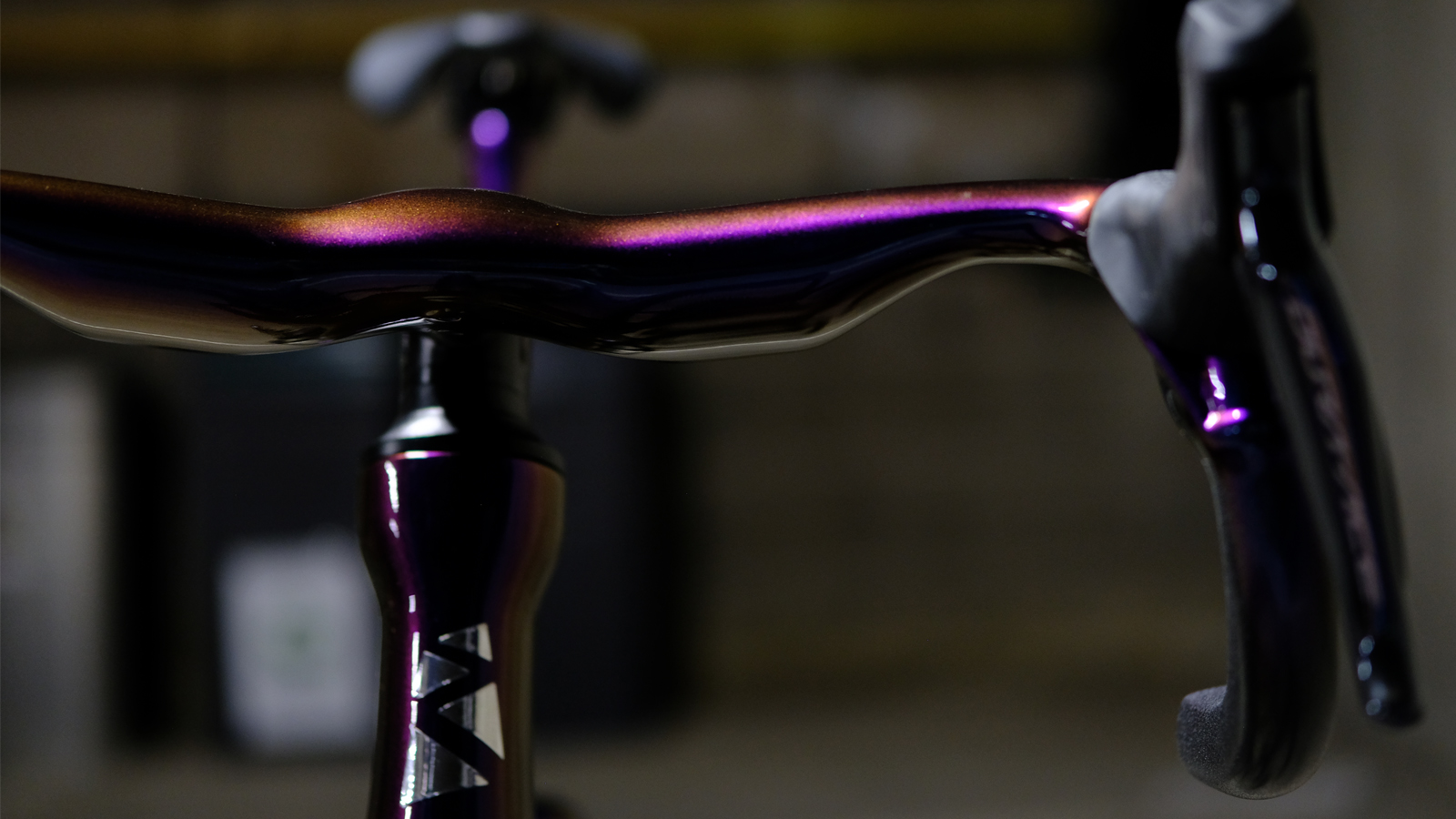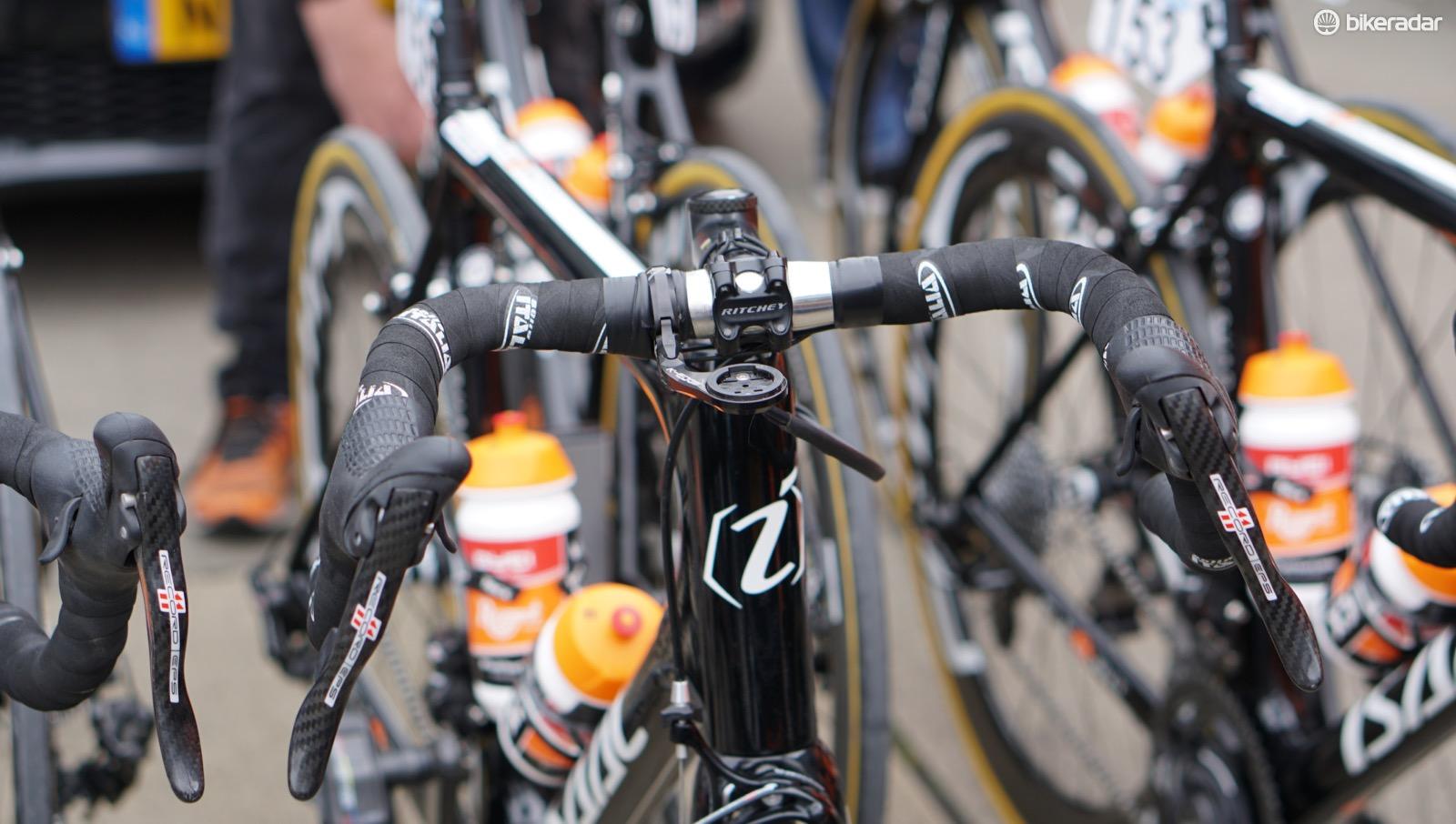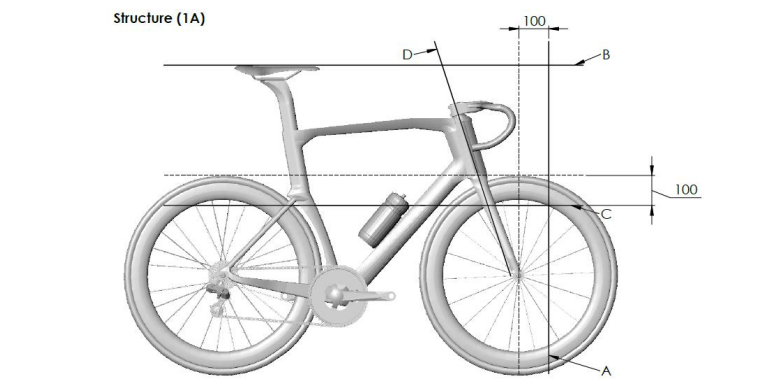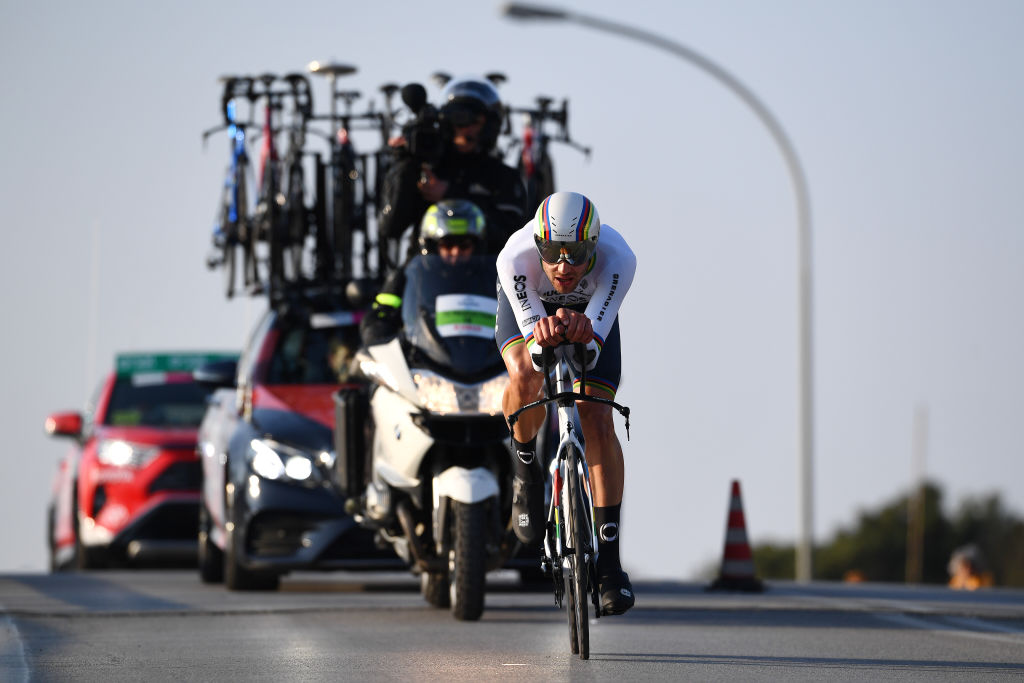New UCI rule clamps down on overly narrow handlebars
Minimum width now applies, alongside new time trial rules coming into force for 2023 season

A spate of new UCI rules are coming into force on January 1, including a new regulation regarding the minimum width of a rider's handlebars.
The change now restricts the width of handlebars on road bikes to 350mm when measured outside to outside at the drops.
The rule, Article 1.3.012 of the Clarification Guide Of The UCI Technical Regulation, which pertains to the overall dimensions of a bike, previously only restricted the maximum width of a bicycle, citing a maximum width of 500mm, which directly related to the maximum authorised width of bars.
Following the update, the rule now states "The maximum width of 500mm for the bicycle directly relates the maximum authorised overall width (outside-outside) of handlebars. The minimum overall width (outside-outside) of traditional handlebars (road events) and base bars (road and track events) is limited to 350mm."
On the road, there has been a slow trend in recent years towards narrower bars in a bid to decrease one's surface area to become more aerodynamic. Riders such as Dan Bigham, Victor Campanaerts and Jan Willem Van Schip have constantly pushed the boundaries, with the latter making headlines in 2019 with his ultra-narrow handlebars.

The trend has also made its way into bike design. In 2021, Ribble launched the Ultra SLR aero bike with the option to add 'Pro' bars that measure just 33cm at the hoods, flaring to 37cm at their widest. More recently, Trek has followed suit with the Madone SLR, which comes with handlebars that flare by 1.5cm from the hood to the drop. Trek says that by making the hoods narrower, the improved rider position is worth 10 watts of aerodynamic improvement.
The newly amended rule appears to be a safeguarding measure against riders taking the narrow-is-aero mentality too far, but it doesn't look as though it would affect any riders' existing approaches. Even Jan Willem Van Schip's bars, which were track drops that measured 32cm at the hoods, would have been legal due to flaring out to 36cm at the drops. The same cannot be said for the Speeco bars he used when he was thrown out of the Baloise Belgium Tour, however, for they fell foul of the separate 'forearms-on-bars' rule.
Get The Leadout Newsletter
The latest race content, interviews, features, reviews and expert buying guides, direct to your inbox!
Somewhat related is another new rule that affects a rider's maximum reach, albeit once again it doesn't appear to affect any riders' existing positions. Rule 1.3.022 has been amended to state that "In no case shall the front of the handlebars exceed the vertical plane passing at horizontal distance of 100mm from the axis of the front wheel spindle."

This means that the front of the bars – most commonly the leading edge of the drops – can not be positioned more than 10cm further forward than the centre of the hub.
The UCI says that this position puts the bars within the "control zone" of the bike: "The more forward the handlebar is positioned, the less maneuverable the bicycle will be and the less it will be easy to react quickly to an obstacle or a wind gust," it continues. "Moreover, this would result in moving the center of gravity of the rider on the bicycle, which would increase even more the risks of loss of control."

These rules come alongside ratification against team car time trial aero trickery which saw following cars stacked with spare bikes in a bid to create an aerodynamic benefit for the rider infront.
There are also new rules on time trial positioning, which include a new three-tier categorisation of rider height. Formerly, only riders exceeding 190cm tall were subject to relaxed rules on rider position. The new rule, Article 1.3.023, splits riders into three height brackets comprising those under 180cm, those from 180cm to 189.9cm, and riders over 190cm, with the middle tier needing to submit a rider height attestation.

Josh is Associate Editor of Cyclingnews – leading our content on the best bikes, kit and the latest breaking tech stories from the pro peloton. He has been with us since the summer of 2019 and throughout that time he's covered everything from buyer's guides and deals to the latest tech news and reviews.
On the bike, Josh has been riding and racing for over 15 years. He started out racing cross country in his teens back when 26-inch wheels and triple chainsets were still mainstream, but he found favour in road racing in his early 20s, racing at a local and national level for Somerset-based Team Tor 2000. These days he rides indoors for convenience and fitness, and outdoors for fun on road, gravel, 'cross and cross-country bikes, the latter usually with his two dogs in tow.